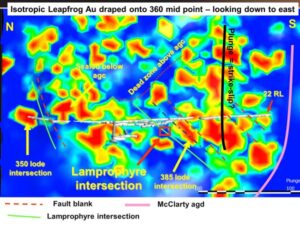
Comparing Greenstone Belts Of Methanian (Ca 2.7ga) And Rhyacian (Ca 2.1ga) Age

Presenter: Marc Bardoux
Language: English
Duration: Half-day
Time: From 1.30 pm to 5 pm
Where: The Marriott Hotel, Georgetown, Guyana – Room “Barimi Socoobi” (second floor)
Course Fees: Companies US$ 200 (AU$: 307) – Students US$ 50 (AU$: 77.00) – Registration will be charged in AU$
Places are limited to 15 participants
This course is now full
Course information:
General components of greenstone belts and their surrounding TTG’s will be discussed. Stratigraphy, structural architectures, mineral systems and geodynamics will be compared between the two greenstone epochs to realize that there are significant differences that might explain various modes of deformation and development (endowment) of certain mineral occurrences.
Comparing 15 gold deposits of the Guiana Shield
Gold is the prime commodity of economic interest of the Rhyacian mega-basins (CB and MMB) where three principal gold deposit types have been roughly defined to date and only briefly documented. Well endowed vein hosted deposits are somewhat exclusive to the MMB basin for which a new classification terminology is proposed as OCSH (Orogenic Clastic Sediment Hosted) that emphasizes that auriferous sulphidic veins are nearly exclusively hosted in moderately strained coarse clastic sediments (conglomerate to sandstone) where veins are most related to very discrete (metric) high strain zones. Fluids in OCSH veins are likely predominantly of metamorphic origin. Tungsten anomalism is commonly related to altered rutile (not plutonic related). Arsenic anomalism is mainly related to black shales. Vein gold deposits of the CMB are generally hosted inside or on the immediate edges of felsic plutonic bodies of varied sizes (plugs to batholiths) where edge strain is amongst the highest encountered in the Rhyacian realm. A large variety of vein orientations and types occur in each of these IH deposits. Many IH veins are polymetallic and commonly yield telluride pathfinders confirming their SCLM sourcing. Strain regimes of most deposits vary from pure shear (coaxial, elongated) to simple shear (non-coaxial, no length change, rotational) states which produce different vein networks that need to be discerned to optimize targeting in 3D. Thus, a new complimentary terminology is also proposed for these orogenic gold deposit types as PSO (pure shear orogenic) and SSO (simple shear orogenic).
Applied structural geology for the Guiana Shield (regional to outcrop scale)
Exploration must be conducted from the regional to the outcrop scale, not the other way around. The best practice is to anticipate and forecast what stratigraphic context and structural regime have affected the rock mass of interest. Type examples of this approach will be illustrated in this session that intends to be as practical as may be possible from rock shots that the group will be encouraged to analyze with the lecturer.




